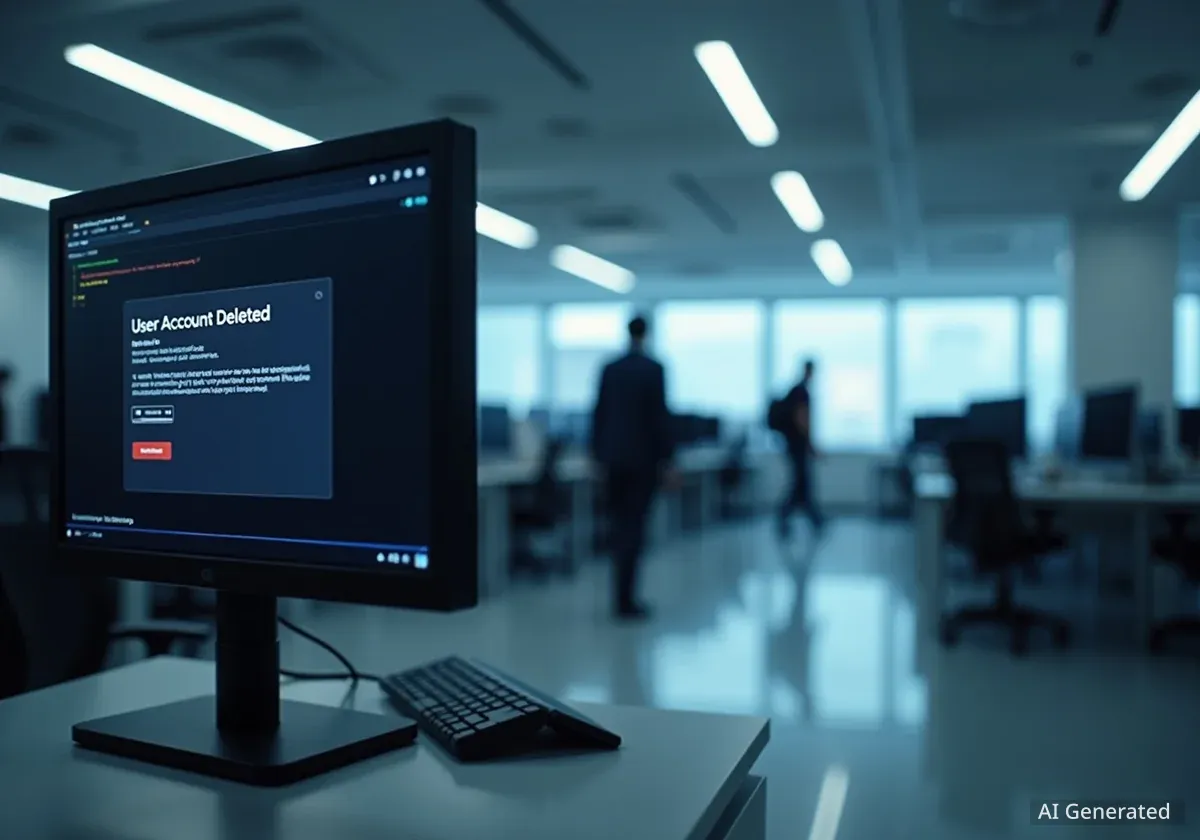Graphite, an AI software company, has implemented a unique and aggressive internal testing method it calls "onboarding roulette." The company randomly deletes one employee's account each day to continuously test and improve its user setup process, a practice it claims has significantly improved its product.
Key Takeaways
- AI code review company Graphite randomly deletes one engineer's account every day at 9 a.m.
- The process, called "onboarding roulette," erases the account, tokens, filters, and all personal settings.
- The goal is to force employees to experience the new user onboarding process regularly, a practice the company refers to as "dogfooding."
- Co-founder Greg Foster states the method has helped identify dozens of bugs and build user empathy among developers.
A Daily System Reset for Employees
AI code review platform Graphite has adopted an unconventional approach to quality assurance. Each morning at 9 a.m., an automated script selects one of the company's engineers at random and permanently deletes their account on the Graphite platform.
This daily event, which the company has named "onboarding roulette," is not a simple reset. The process completely erases the employee's account, including authentication tokens, customized filters, and any personalizations like uploaded GIFs. The selected employee must then create a new account from scratch, as any new user would.
Greg Foster, the co-founder and Chief Technology Officer at Graphite, detailed the practice in a company blog post. He explained that the goal is to force the development team to consistently experience what is often a difficult part of the user journey to test: the initial setup.
Understanding the Onboarding Challenge
For many software companies, testing the new user onboarding process is a persistent challenge. Developers who build the product are already experts and cannot replicate the experience of a first-time user. This can lead to blind spots where bugs or confusing steps go unnoticed, creating a frustrating initial experience for actual customers.
The Rationale Behind 'Dogfooding'
The practice is an extreme form of a software development concept known as "dogfooding." The term, short for "eating your own dog food," refers to the strategy of using one's own product internally. This allows a company to find and fix issues before they affect customers.
While most companies practice dogfooding by simply using their software for daily tasks, Graphite has taken the concept a step further by focusing on the initial, and often most critical, point of user contact.
"Our solution at Graphite has been to run a roulette script, randomly deleting one of our engineers' Graphite accounts every day at 9 a.m.," Foster wrote. "We don’t just reset onboarding—we delete their account, tokens, configured filters, uploaded gifs, and more."
Foster acknowledged the potential for employee frustration but argued that the benefits have been substantial and immediate since the policy was implemented.
Frequency of Deletion
According to Graphite's CTO, while one employee is affected each day, the rotation means any single individual is only deleted about once per month on average. The company believes this frequency is sufficient to consistently identify problems without causing excessive disruption to any one person's workflow.
Stated Benefits and Company Perspective
Graphite's leadership maintains that the daily disruption is a worthwhile trade-off for the improvements it brings to the software. The primary goal is to achieve a fast, bug-free, and painless onboarding experience for new customers.
Identifying and Fixing Bugs
According to Foster, the most direct benefit has been rapid bug detection. He stated that "one teammate a day hitting a sharp edge has proven enough to find and motivate fixing issues." The company claims to have caught "tens of bugs" that might have otherwise been missed by traditional quality assurance methods.
Building User Empathy
Beyond bug fixes, Graphite emphasizes the importance of building developer empathy. By forcing engineers to repeatedly go through the setup process, the company aims to give them a direct understanding of a new user's perspective. This insight is considered crucial for designing a more intuitive and user-friendly product.
"Isn't that frustrating? Sure," Foster admitted. "Folks on our team come to work to code new features, not to find themselves logged out and forced to recreate their accounts from scratch. We were cautious when first trying the technique, but the benefits became clear immediately."
An Unconventional Method in Software Development
The practice of deliberately deleting employee accounts is highly unusual in the tech industry. While internal testing is standard, methods that intentionally disrupt an employee's daily work are rare. The approach raises questions about the balance between product improvement and employee morale.
Foster, however, strongly recommends the practice to other product development teams.
"Deleting employee accounts has created dogfooding on one of our most critical and hard to test surfaces," he concluded. "I’d strongly recommend other product teams consider automatically deleting employee accounts for the same benefits."
The long-term impact on employee retention and workplace culture at Graphite remains to be seen. However, the company's leadership presents it as a successful, if unorthodox, strategy for ensuring product quality and aligning its development team with the end-user experience.





